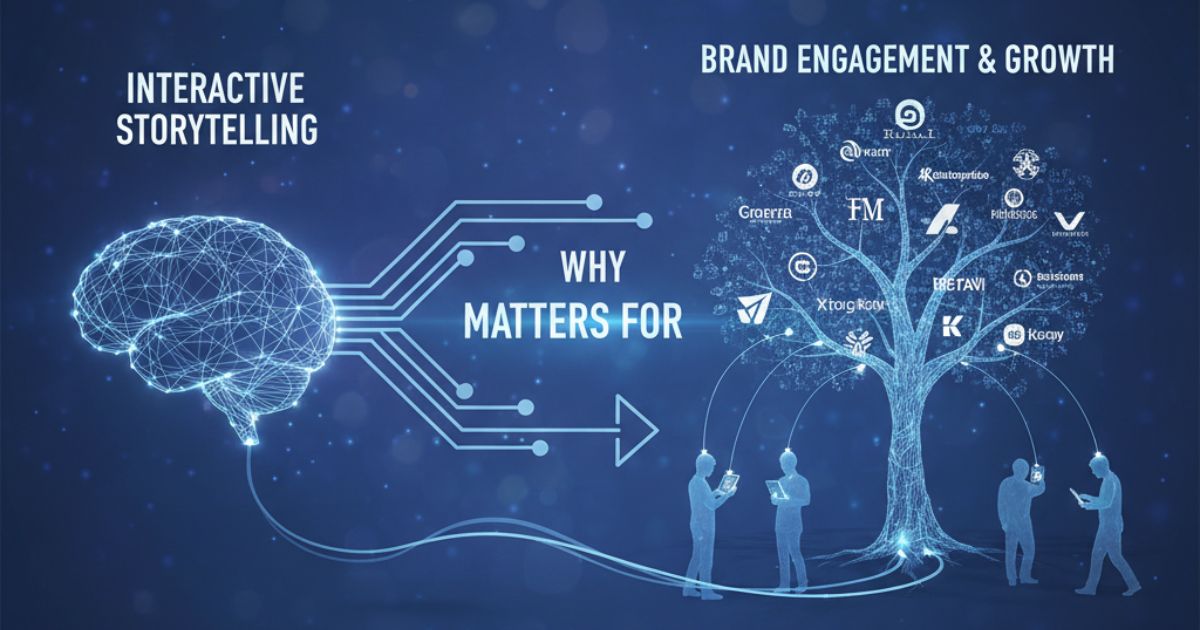In today’s crowded marketplace, simply broadcasting a message is no longer enough. Audiences crave involvement, not just passive consumption. That’s where interactive storytelling comes in. By inviting customers to co-create or choose elements of your brand narrative, you transform them from spectators into active participants. The result? Deeper emotional connections, higher engagement rates, and a brand community that feels personally invested in your success.
What Is Interactive Storytelling?
Interactive storytelling is a dynamic approach that merges narrative techniques with user participation. Rather than delivering a one-way story, brands offer decision points, multimedia elements, or gamified experiences that engage the audience. Users might click through branching storylines, answer questions in a quiz, or explore augmented reality environments. Regardless of the format, the key is making meaningful choices that shape the outcome and make each experience feel personal.
Why Interactive Storytelling Matters for Branding

- Enhanced Memorability: Active participation cements brand messages in customers’ minds more effectively than passive ads.
- Emotional Connection: When users make choices that align with their values or preferences, they form a deeper bond with the brand.
- Data-Driven Insights: Each interaction generates valuable first-party data on customer preferences, pain points, and behaviors.
- Shareability: Unique, personalized experiences are more likely to be shared on social media, extending your organic reach.
- Competitive Differentiation: Few brands invest in rich, interactive narratives—this is your chance to stand out.
Formats of Interactive Storytelling
Choose the format that best fits your audience and objectives. Here are five popular options:
- Branching Narratives: Create a “choose-your-own-adventure” journey where each click leads to different outcomes, showcasing product features or brand values.
- Quizzes & Polls: Offer fun personality quizzes that recommend services or products, while collecting preference data.
- Interactive Videos: Embed in-video hotspots that allow viewers to select what they learn about next or explore 360° scenes.
- Augmented Reality (AR): Let users place virtual products in their real environment or unlock hidden brand stories by scanning packaging.
- Social Media Stories: Use Instagram or Facebook Stories features—poll stickers, swipe-ups, or branching links—to engage mobile audiences in bite-sized narratives.
A Step-by-Step Framework for Building Your Interactive Story
Define Your Core Narrative
Every great story starts with a clear theme. What brand value or product benefit do you want to highlight? Align the narrative arc—beginning, conflict, resolution—with your marketing objectives. For example, a sustainable fashion brand might center its story around a consumer’s journey to reducing their carbon footprint through style choices.
Map Customer Personas and Journeys
Know who you’re talking to. Craft personas that cover demographics, motivations, and digital behavior patterns. Then map out touchpoints: where do they discover you, and how can interactive elements fit seamlessly into those moments?
Select Your Platforms and Technologies
Decide whether your story lives on your website, in an app, on social media, or via email. Budget and technical resources will guide your choice of tools—from no-code quiz builders to custom AR development.
Design Interactive Elements
Focus on micro-interactions that feel intuitive and rewarding. Sketch wireframes or flowcharts showing how choices lead to different narrative branches. Collaborate with UX/UI designers to ensure a smooth user journey.
Craft Engaging Copy and Visuals
Strong storytelling depends on compelling writing and on-brand visuals. Use concise copy that drives each decision point. Supplement text with illustrations, photos, or animations that reinforce the mood and message.
Test, Iterate, and Optimize
Run A/B tests on headlines, branching points, and call-to-action placements. Utilize heatmaps and engagement metrics to pinpoint areas of drop-off. Then refine your flows to maximize completion rates and conversions.
Measuring Success

Track both quantitative and qualitative metrics:
- Completion Rate: Percentage of users who finish the interactive journey.
- Time on Experience: Longer sessions indicate deeper engagement.
- Click-through Rate (CTR): For branching links or product recommendations.
- Social Shares: Volume of organic posts and story reshares.
- Qualitative Feedback: Comments, surveys, or in-experience feedback widgets help you understand emotional impact.
Real-World Case Study: EcoClean Body Care
EcoClean, a natural skincare brand, launched an interactive quiz called “Find Your EcoRoutine.” Users answered five simple questions about skin type, lifestyle, and sustainability goals. Ultimately, EcoClean recommended a customized product bundle and provided users with a unique coupon code. The results: a 65% quiz completion rate, 48% increase in average order value, and 120% growth in email subscriptions within two months.
Best Practices and Pitfalls to Avoid
- Keep it Simple: Avoid overwhelming users with too many branches or choices. Three to five decision points are usually optimal.
- Value Exchange: Clearly communicate what users gain—such as personalization, entertainment, or discounts—before asking for their time or data.
- Mobile-First Design: Ensure interactive elements load quickly and respond smoothly on smartphones.
- Accessibility Matters: Provide alt text for images, legible fonts, and keyboard navigation for inclusivity.
- Privacy Compliance: If you collect personal data, be transparent about usage and obtain necessary opt-ins.
Conclusion
Interactive storytelling offers a powerful way to deepen brand engagement, gather actionable insights, and stand out in a sea of passive content. By following this step-by-step framework—defining your narrative, mapping personas, designing thoughtful interactions, and measuring results—you’ll create memorable experiences that turn casual browsers into loyal brand advocates. Ready to bring your brand story to life? Start brainstorming your first interactive scenario today and watch your audience become active co-creators of your brand journey!
Read More: How Brand Storytelling on TikTok Drives Real Business Results
Author’s Note: Share your own interactive branding success stories in the comments below or tag us on social media. We can’t wait to see what you build!




